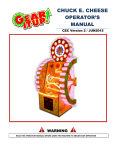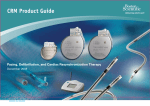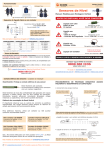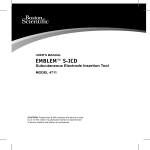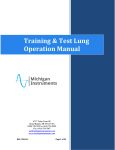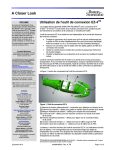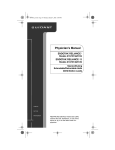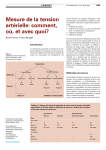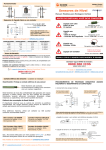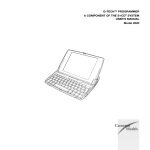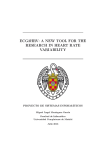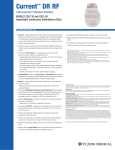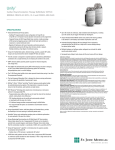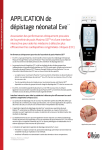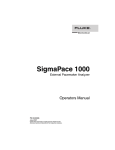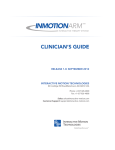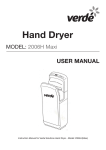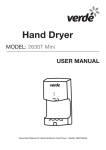Download EMBLEM™ S-ICD System Fact Sheet
Transcript
EMBLEM™ S-ICD System Fact Sheet Sudden Cardiac Arrest (SCA) SCA is a serious, life-threatening medical emergency that happens abruptly and without warning. During SCA, the heart’s electrical system malfunctions, and it is no longer able to pump blood to the rest of the body. The lack of blood to the brain causes the person to lose consciousness quickly. If the person does not receive immediate treatment with defibrillation, brain damage and death can occur. 1 For those at risk of SCA, one treatment option is a pacemaker-like device called an implantable cardioverter defibrillator (ICD), which may prevent sudden cardiac death. 2 ICD therapy has been shown to effectively stop 95 percent or more of dangerously fast heart rhythms. 3,4,5 With an ICD device, 19 out of 20 people will survive SCA. 6 EMBLEM™ Subcutaneous Implantable Defibrillator (S-ICD) System The EMBLEM S-ICD System is an innovative and truly novel ICD. Unlike traditional ICDs that require placement of at least one lead in or on the heart, the S-ICD System is implanted just under the skin and provides the patient protection from SCA without invading the heart and blood vessels. Leads in the heart may be associated with infrequent but serious complications, including lead displacement, fracture and systemic blood infections, or the need for lead extraction, which may lead to hospital readmission, increased mortality and associated costs. 7,8,9 It is the only fully subcutaneous (under the skin) ICD available. The EMBLEM S-ICD System is 20 percent thinner and is projected to last 40 percent longer than the previous S-ICD System. 10,11 These improvements may further improve patient comfort and cosmetic outcomes while reducing the number of times the device will require replacement. The EMBLEM S-ICD System is also enabled for remote patient management for increased patient convenience.* *Latitude NXT for Emblem is an investigational device and not available for sale in the US. 1 National Heart, Lung, and Blood Institute. What is Sudden Cardiac Arrest? http://www.nhlbi.nih.gov/health/health-topics/topics/scda. Accessed May 18, 2015 2 Huikuri H, et al. Sudden death due to cardiac arrhythmias. NEJM. 2001;345:1473. 3 Burke, M.C. et al. J Am Coll Cardiol. 2015; 65(16):1605–15. 4 Healey, J, et al. The Lancet. Online before print doi: 10.1016/S0140-6736(14)61903-6. 5 Gold MR et al. Circulation 2002;105:2043-2048. 6 Himmrich E, et al. Is ICD programming for double intraoperative defibrillation threshold energy safe and effective during long-time follow-up? Results of a prospective randomized multicenter study (Low-Energy ENDOTAK Trial - LEFT). Z Kardiol. 1999;88:103-12 [German language edition]. 7 Reynolds et al. The Frequency and Incremental Cost of Major Complications Among Medicare Beneficiaries Receiving Implantable Cardioverter-Defibrillator. J Am Coll Cardiol 2006;47:2493–7. 8 Peterson PN, et al. Association of single- vs dual-chamber ICDs with mortality, readmissions, and complications among patients receiving an ICD for primary prevention. JAMA 2013;309:2025-2034. 9 van Rees JB, et al. Implantation-related complications of implantable cardioverter-defibrillators and cardiac resynchronization therapy devices: a systematic review of randomized clinical trials. J Am Coll Cardiol 2011;58:995-1000. 10 SQ-RX PULSE GENERATOR USER’S MANUAL, PN 102098-211 Rev A 2012/12. 11 EMBLEM™ S-ICD PULSE GENERATOR USER’S MANUAL, 359278-002 EN US 2015-02. CRM-319415-AA JUN2015 How the S-ICD System Works Like other ICDs, the S-ICD System continuously monitors a patient’s heart rhythm, 24 hours a day. If the S-ICD System detects a heart arrhythmia (abnormal rhythm) problem, it sends out an electrical shock to correct it. The experience of receiving a shock can differ for each person. Because many patients faint or become unconscious shortly after a very fast heart rhythm starts, they do not feel these high-energy shocks. Those who are conscious sometimes describe the shock as a “kick in the chest.” The sensation lasts for only a second. If shock is felt, a patient should notify their physician immediately. How S-ICD is Different from a Traditional ICD ICD therapy is a trustworthy therapy that has prolonged thousands of lives. When ICD devices were first introduced in the 1980s, they were implanted in the abdomen. Later came the transvenous ICD, which is implanted in the shoulder area. The less invasive S-ICD System is the newest type of ICD device, which delivers protection without touching the heart. Transvenous ICD • Typically implanted in the left shoulder area, near the collarbone. • Using X-ray imaging, the leads are fed through a vein into the heart and across the heart valve. • Depending on the patient’s heart condition, 1 or 2 leads will be placed in the heart, and then they are attached to the heart wall for optimal connectivity. S-ICD System • Typically implanted on the left side of the chest next to the rib cage, with the lead implanted just under the skin above the breastbone. • The electrode is placed under the skin, and delivers therapy without wires implanted in the heart. • S-ICD leaves the heart and blood vessels untouched and intact. S-ICD vs. Pacemaker Both devices are implanted in people and both use electrical impulses to stimulate the heart, but there are differences: • A pacemaker helps control an abnormally slow heart rhythm by sending small electrical pulses to the heart if it is beating too slowly. • An ICD device, such as the S-ICD System, sends an electric shock to the heart if it detects a dangerously fast heartbeat in order to restore the heart to its normal rhythm. It is designed to prevent SCA. 1 National Heart, Lung, and Blood Institute. What is Sudden Cardiac Arrest? http://www.nhlbi.nih.gov/health/health-topics/topics/scda. Accessed May 18, 2015 2 Huikuri H, et al. Sudden death due to cardiac arrhythmias. NEJM. 2001;345:1473. 3 Burke, M.C. et al. J Am Coll Cardiol. 2015; 65(16):1605–15. 4 Healey, J, et al. The Lancet. Online before print doi: 10.1016/S0140-6736(14)61903-6. 5 Gold MR et al. Circulation 2002;105:2043-2048. 6 Himmrich E, et al. Is ICD programming for double intraoperative defibrillation threshold energy safe and effective during long-time follow-up? Results of a prospective randomized multicenter study (Low-Energy ENDOTAK Trial - LEFT). Z Kardiol. 1999;88:103-12 [German language edition]. 7 Reynolds et al. The Frequency and Incremental Cost of Major Complications Among Medicare Beneficiaries Receiving Implantable Cardioverter-Defibrillator. J Am Coll Cardiol 2006;47:2493–7. 8 Peterson PN, et al. Association of single- vs dual-chamber ICDs with mortality, readmissions, and complications among patients receiving an ICD for primary prevention. JAMA 2013;309:2025-2034. 9 van Rees JB, et al. Implantation-related complications of implantable cardioverter-defibrillators and cardiac resynchronization therapy devices: a systematic review of randomized clinical trials. J Am Coll Cardiol 2011;58:995-1000. 10 SQ-RX PULSE GENERATOR USER’S MANUAL, PN 102098-211 Rev A 2012/12. 11 EMBLEM™ S-ICD PULSE GENERATOR USER’S MANUAL, 359278-002 EN US 2015-02. CRM-319415-AA JUN2015 The Procedure The S-ICD System is surgically inserted during a 6-step procedure that generally takes about one hour: 1. An incision is made on the left side of the chest, next to the rib cage. 2. A pocket or pouch is formed under the skin, where the S-ICD pulse generator will be inserted. 3. Two small incisions are made slightly to the left of the breastbone to allow the electrode to be placed under the skin. 4. The electrode is then attached to the S-ICD pulse generator. 5. Once the S-ICD System is implanted, most doctors will test the device. Patients will be asleep during this part of the procedure, during which the doctor induces an arrhythmia (irregular heartbeat) and the S-ICD is allowed to detect and stop the abnormal heart rhythm automatically. Some settings will be adjusted to work best for each patient’s heart using a separate programmer tablet. 6. Finally, the doctor will close the incisions to complete the procedure. Indications, contraindications, warnings and complete implant instructions for use can be found in the product labeling supplied with each device. ### 1 National Heart, Lung, and Blood Institute. What is Sudden Cardiac Arrest? http://www.nhlbi.nih.gov/health/health-topics/topics/scda. Accessed May 18, 2015. 2 Huikuri H, et al. Sudden death due to cardiac arrhythmias. NEJM. 2001;345:1473. 3 Burke, M.C. et al. J Am Coll Cardiol. 2015; 65(16):1605–15. 4 Healey, J, et al. The Lancet. Online before print doi: 10.1016/S0140-6736(14)61903-6. 5 Gold MR et al. Circulation 2002;105:2043-2048. 6 Himmrich E, et al. Is ICD programming for double intraoperative defibrillation threshold energy safe and effective during long-time follow-up? Results of a prospective randomized multicenter study (Low-Energy ENDOTAK Trial - LEFT). Z Kardiol. 1999;88:103-12 [German language edition]. 7 Reynolds et al. The Frequency and Incremental Cost of Major Complications Among Medicare Beneficiaries Receiving Implantable Cardioverter-Defibrillator. J Am Coll Cardiol 2006;47:2493–7. 8 Peterson PN, et al. Association of single- vs dual-chamber ICDs with mortality, readmissions, and complications among patients receiving an ICD for primary prevention. JAMA 2013;309:2025-2034. 9 van Rees JB, et al. Implantation-related complications of implantable cardioverter-defibrillators and cardiac resynchronization therapy devices: a systematic review of randomized clinical trials. J Am Coll Cardiol 2011;58:995-1000. 10 SQ-RX PULSE GENERATOR USER’S MANUAL, PN 102098-211 Rev A 2012/12. 11 EMBLEM™ S-ICD PULSE GENERATOR USER’S MANUAL, 359278-002 EN US 2015-02. CRM-319415-AA JUN2015 EMBLEM™ S-ICD System from Boston Scientific CRM Indications for Use The S-ICD System is intended to provide defibrillation therapy for the treatment of life-threatening ventricular tachyarrhythmias in patients who do not have symptomatic bradycardia, incessant ventricular tachycardia, or spontaneous, frequently recurring ventricular tachycardia that is reliably terminated with anti-tachycardia pacing. Contraindications Unipolar pacing and impedance-based features are contraindicated for use with the S-ICD System. Warnings Read this manual thoroughly before using the S-ICD System to avoid damage to the pulse generator and/or subcutaneous electrode. Such damage can result in patient injury or death. For single patient use only. Do not reuse, reprocess, or re-sterilize. All Boston Scientific S-ICD implantable components are designed for use with the Boston Scientific or Cameron Health S-ICD System only. Connection of any S-ICD System components to a non-compatible component will result in failure to deliver life-saving defibrillation therapy. Always have external defibrillation equipment and medical personnel skilled in CPR available during implant and follow-up testing. Using multiple pulse generators could cause pulse generator interaction, resulting in patient injury or a lack of therapy delivery. Test each system individually and in combination to help prevent undesirable interactions. Concomitant use of the S-ICD System and implanted electromechanical devices (for example a ventricular assist device, VAD; or implantable insulin pump or drug pump) can result in interactions that could compromise the function of the S-ICD, the co-implanted device, or both. Electromagnetic (EMI) or therapy delivery from the co-implanted device can interfere with S-ICD sensing and/or rate assessment, resulting in inappropriate therapy or failure to deliver therapy when needed. In addition, a shock from the S-ICD pulse generator could damage the coimplanted device and compromise its functionality. To help prevent undesirable interactions, test the S-ICD system when used in combination with the co-implanted device, and consider the potential effect of a shock on the co-implanted device. Handle the components of the S-ICD System with care at all times and maintain proper sterile technique. Do not modify, cut, kink, crush, stretch or otherwise damage any component of the S-ICD System. Use caution handling the subcutaneous electrode connector. Do not directly contact the connector with any surgical instruments such as forceps, hemostats, or clamps. Use appropriate anchoring techniques as described in the implant procedure to prevent S-ICD System dislodgment and/or migration. Use caution when placing a magnet over the SICD pulse generator because it suspends arrhythmia detection and therapy response. In patients with a deep implant placement (greater distance between the magnet and the pulse generator) magnet application may fail to elicit the magnet response. Do not expose a patient with an implanted S-ICD System to diathermy. Do not expose a patient to MRI scanning. Advise patients to seek medical guidance before entering environments that could adversely affect the operation of the active implantable medical device, including areas protected by a warning notice that prevents entry by patients who have a pulse generator. The pulse generator may be more susceptible to low frequency electromagnetic interference at induced signals greater than 80 uV. The S-ICD System has not been evaluated for pediatric use. Precautions For specific information on precautions, refer to the following sections of the product labeling: clinical considerations, sterilization and storage, implantation, device programming, environmental and medical therapy hazards, hospital and medical environments, home and occupational environments, follow-up testing, explant and disposal and supplemental precautionary information. Advise patients to avoid sources of EMI because EMI may cause the pulse generator to deliver inappropriate therapy or inhibit appropriate therapy. Potential Adverse Events Potential adverse events related to implantation of the S-ICD System may include, but are not limited to, the following: Acceleration/induction of atrial or ventricular arrhythmia, adverse reaction to induction testing, allergic/adverse reaction to system or medication, bleeding, conductor fracture, cyst formation, death, delayed therapy delivery, discomfort or prolonged healing of incision, electrode deformation and/or breakage, electrode insulation failure, erosion/extrusion, failure to deliver therapy, fever, hematoma/seroma, hemothorax, improper electrode connection to the device, inability to communicate with the device, inability to defibrillate or pace, inappropriate post shock pacing, inappropriate shock delivery, infection, keloid formation, migration or dislodgment, muscle/nerve stimulation, nerve damage, pneumothorax, post-shock/post-pace discomfort, premature battery depletion, random component failures, stroke, subcutaneous emphysema, surgical revision or replacement of the system, syncope, tissue redness, irritation, numbness or necrosis. Patients who receive an S-ICD System may develop psychological disorders that include, but are not limited to, the following: depression/anxiety, fear of device malfunction, fear of shocks, phantom shocks. Refer to the product labeling for specific indications, contraindications, warnings/precautions and adverse events. Rx only. (Rev. A) All trademarks are property of their respective owners. CRM-319415-AA JUN2015





